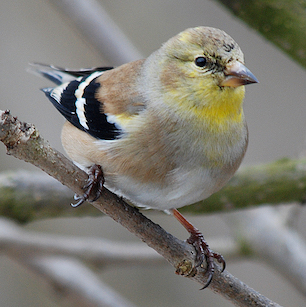
The Journal of Avian Biology’s March/April cover will feature an artful and informative illustration from the perspective piece “Molt terminology: envisioning an evolutionary approach” by Peter Pyle, Steve N. G. Howell, Danny I. Rogers. and Chris Corben. Twenty years ago these same authors originally proposed the term 'preformative molt' and defined four strategies to help elucidate the evolution of molts in birds (Howell et al. 2003; Condor, 105:635-653). The illustration, by artist and biologist Lauren Helton, depicts an avian evolutionary tree with molt strategies mapped onto it. In the perspective piece, the authors propose, illustrate, and discuss how molt strategies may have evolved across avian lineages. Staunch advocates of the Humphrey-Parkes (H-P) system of molt and plumage terminology, they aim to familiarize readers with this system and increase their understanding of its evolutionary framework. By illustrating how molt strategies may have evolved along lineages of an evolutionary tree, they hope to increase comfort with the H-P system, particularly among readers using 'life-cycle' molt and plumage terminology, which is functional for passerines in the Northern Hemisphere but generally not globally or among larger species of birds.

Our understanding of the evolution of molt strategies is still developing and Pyle and coauthors emphasize that the conceptualization they present here is a working hypothesis. The four main molt strategies defined by Howell et al. (2003) are mapped onto the tree: “simple basic strategy” (SBS; no preformative or prealternate molts), “complex basic strategy”(CBS; a preformative molt but no prealternate molts), “simple alternate strategy” (SAS; a single molt in the first cycle and prealternate molts in later cycles), and “complex alternate strategy” (CAS; a preformative molt in the first cycle and prealternate molts in all cycles).

Seeing molts presented in an evolutionary framework, one is struck by the prevalence of the CBS strategy and intrigued by the departures from it. The authors propose that the CBS is basal to all avian lineages and provide discussion and speculation on how the other three strategies may have evolved. For example, the SBS was formerly thought to be basal, but instead a preformative molt appears to have been lost in lineages exhibiting the SBS from those exhibiting the CBS, for families and species that grow strong juvenile feathering. Taxa exhibiting the CAS appear to have evolved prealternate molts to replace worn feathers (particularly in migratory species), but some species have taken adaptive advantages of these extra molts to develop more cryptic plumages for flight-feather molt or more colorful plumages for courtship. Some species that exhibit the SAS may have evolved this strategy through the merging of ancestral preformative and first prealternate molts along lineages exhibiting the CAS.

An evolutionary perspective makes the endeavor of understanding avian molt less daunting. "Once one envisions the evolutionary bases of H-P, which can be difficult to do for those of us who grew up on the life-cycle system, the categorization and study of molts becomes much less confusing, much more satisfying, and actually rather enjoyable," says Pyle.
Note: Peter Pyle will be giving a free webinar on "An Evolutionary Perspective On Molt" on March 27th, more details to come. If you are not already subscribed to our blog, please subscribe to get an email announcement with registration details for the webinar and other news from IBP. You can unsubscribe at any time."






